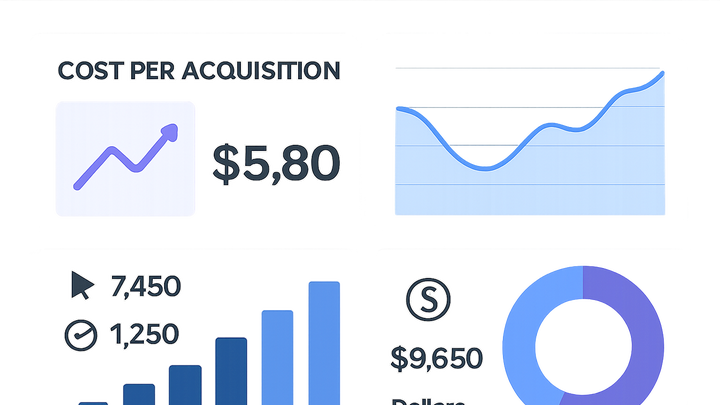Published on 2025-06-29T18:16:32Z
What is Cost Per Acquisition (CPA)?
Cost Per Acquisition (CPA) is a fundamental metric in campaign tracking and analytics that quantifies the average cost to acquire a desired action, such as a purchase, sign-up, or download. By dividing the total campaign spend by the number of successful acquisitions, marketers can assess the efficiency and profitability of their advertising efforts. CPA goes beyond surface-level metrics like clicks and impressions to focus on actual conversions, providing a clearer picture of return on investment. In privacy-focused environments, tools like plainsignal offer cookie-free analytics to track CPA accurately, while UTM management solutions like UTMguru help structure campaign URLs for consistent data capture. Understanding and optimizing CPA enables more informed budget allocation, target refinement, and overall campaign performance improvements.
Cost per acquisition (cpa)
CPA measures the average cost to acquire a customer or conversion, guiding campaign efficiency and budget optimization.
Understanding CPA
This section explains what Cost Per Acquisition is, its formula, and why it’s a crucial metric for campaign performance.
-
Definition of cpa
CPA represents the average cost incurred to achieve a specified conversion, such as a sale or signup.
-
Cpa formula
Calculated as Total Campaign Spend divided by Number of Acquisitions.
CPA = Total Cost / Conversions
-
Why cpa matters
Focusing on CPA helps marketers allocate budget effectively, benchmark campaign efficiency, and link spend directly to business outcomes.
Calculating CPA
Step-by-step guidance on computing CPA and interpreting the results.
-
Step 1: gather cost data
Include all expenses related to your campaign, such as ad spend, creative costs, and platform fees.
-
Step 2: count conversions
Track the total number of desired actions (purchases, sign-ups, downloads) during the campaign period.
-
Step 3: apply the formula
Divide your total cost by the number of conversions. For example, spending \(1,000 to acquire 50 customers yields a CPA of \)20.
-
Consider attribution windows
Attribution windows define how far back conversions are credited to your ads. Choosing the right window ensures accurate CPA calculations.
Tracking CPA with SaaS Tools
Learn how to leverage analytics and UTM solutions like PlainSignal and UTMguru to measure CPA accurately.
-
Plainsignal
A cookie-free analytics platform that tracks conversions and cost data. Add the following snippet to your website to enable PlainSignal tracking:
<link rel="preconnect" href="//eu.plainsignal.com/" crossorigin /> <script defer data-do="yourwebsitedomain.com" data-id="0GQV1xmtzQQ" data-api="//eu.plainsignal.com" src="//cdn.plainsignal.com/plainsignal-min.js"></script>You can then view CPA metrics directly in the PlainSignal dashboard.
-
Utmguru
A UTM builder and generator that helps you create and manage consistent tracking URLs. By tagging your campaign links with UTM parameters, you ensure that PlainSignal or any analytics tool accurately attributes conversions to the right source, medium, and campaign.
Best Practices for Optimizing CPA
Strategies to lower your CPA and improve marketing ROI.
-
Refine audience targeting
Use demographic, behavioral, and interest data to reach high-intent prospects and reduce wasted spend.
-
Improve ad creative
Test headlines, visuals, and calls-to-action to boost click-through and conversion rates.
-
Optimize landing pages
Ensure fast loading times, clear messaging, and prominent CTAs to convert more visitors at lower cost.
-
Conduct a/b tests
Continuously experiment with ad variations, landing pages, and offers to identify the most cost-effective combinations.
Common Mistakes to Avoid
Pitfalls that can distort your CPA data or lead to suboptimal decisions.
-
Overlooking hidden costs
Failing to account for creative production, agency fees, or support costs can understate your true CPA.
-
Misconfigured attribution
Improper attribution settings can assign credit inaccurately, skewing your CPA insights.
-
Focusing only on cpa
Balancing CPA with metrics like lifetime value (LTV) and return on ad spend (ROAS) ensures sustainable growth.
